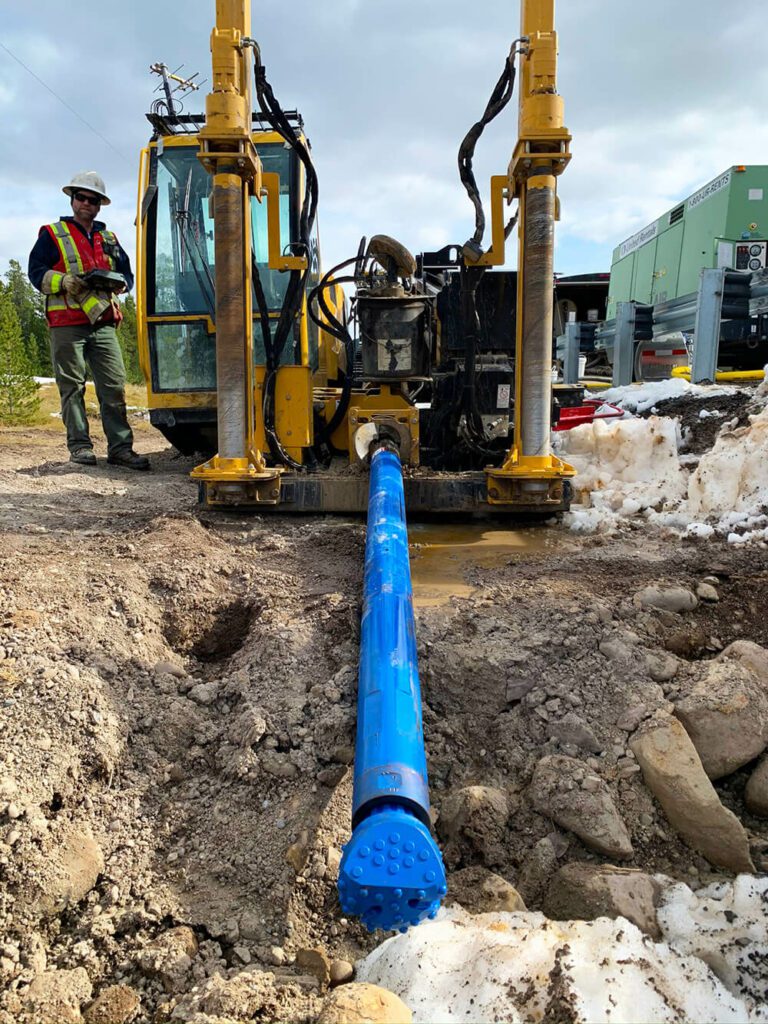Below the Ground: Grasping HDD

HDD, commonly known as Horizontal Directional Drilling, is a cutting-edge method in the construction and utility installation industry that facilitates the installation of underground utilities without disturbing the surface. As urban areas expand and the need for infrastructure increases, HDD offers a solution that reduces ecological impact while maximizing efficiency. Comprehending how HDD operates is crucial for individuals involved in public works planning, as it provides a method to traverse complex terrains and city settings where traditional trenching techniques fall short.
In this article, we will examine the different facets of Horizontal Directional Drilling, including its advantages, the techniques behind it, and its uses in projects spanning telecommunications to renewable energy. We will investigate the HDD process from start to finish, outlining the tools, planning requirements, and possible challenges faced during implementation. As we gaze into the future, it is clear that HDD will persist in play a vital role in shaping our urban infrastructure and paving the way for advancements in trenchless technology.
Grasping Lateral Directional Drilling
Horizontal Directional Boring, frequently abbreviated as H-D-D, is a new trenchless technology used to place subterranean utilities in a barely invasive method. This methodology involves drilling a test hole along a predetermined path, which is then enlarged to fit the utility being laid, such as gas lines or wires. H.D.D is particularly advantageous in city settings where conventional trenching can disturb surface activities and life, making it an essential method for utility installation beneath highways, rivers, and critical spaces.
The HDD process starts with precise preparation and assessment to figure out the most suitable course for the installation while assessing existing facilities and ecological elements. Drilling equipment are set up on the surface, and the drilling starts with a small-diameter pilot hole. Once the pilot hole is drilled, it is cautiously enlarged using advanced machinery to the desired size, allowing for the smooth installation of the utility line. This controlled method considerably reduces the impact on the surrounding area, minimizing interruptions to road activity, landscaping, and environmental environments.
One of the key benefits of H-D-D is its capability to maneuver through different soil conditions and challenging terrains. Whether operating in stony landscapes or loose soils, H.D.D methods modify to the obstacles presented, guaranteeing that projects can advance without significant setbacks. As continues to evolve, innovations in tools, such as better drilling agents and drill head configurations, are boosting its performance and efficiency, making H.D.D an increasingly preferred choice for utility installation across the globe.
Advantages and Applications of Horizontal Directional Drilling
HDD offers numerous benefits that make it an exciting choice for multiple construction and utility installation projects. One of the main benefits is its low surface interference, which is crucial in urban areas where digging can cause considerable inconveniences. HDD allows for https://telegra.ph/Horizontal-Directional-Drilling-Methods-for-Achievement-05-25 of pipelines, wires, and various services without major excavation, preserving existing structures and environments. This method greatly reduces the impact on transportation, vegetation, and public spaces, making it a popular option for urban development initiatives.
Another significant benefit of Horizontal Directional Drilling is the capacity to traverse difficult landscapes, including uneven ground, waterways, and ecologically sensitive areas. By employing a horizontal drilling method, HDD can avoid obstacles that conventional trenching cannot, thereby removing the need for major excavation. This makes it particularly effective for installing utility lines beneath waterways and highways. Moreover, its adaptability to different soil conditions further enhances its effectiveness for varied projects.
HDD finds widespread applications in sectors such as telecommunications, energy, and hydrology. It is often used for installing fiber optic lines, which require exact and unobtrusive installation methods to ensure high-speed connectivity. Additionally, as the demand for sustainable energy infrastructure grows, HDD is becoming increasingly important in installing pipes for sustainable energy sources. With its capacity to reduce project timelines and expenses, Horizontal Directional Drilling is distinguished as a dependable choice for builders and project managers alike.
Obstacles and Advancements in HDD
HDD faces several obstacles that can influence project outcomes. One significant obstacle is navigating varying soil conditions, which can alter drilling speed and precision. Hard rock formations, unstable soils, and groundwater levels can hinder operations, requiring specialized equipment and techniques. Furthermore, the potential for environmental disruptions, such as inadvertent returns or blowouts, necessitates thorough planning and monitoring throughout the drilling process to ensure security and compliance with regulations.
Innovations in technology have been crucial in addressing these challenges. The integration of advanced GPS and sonar systems improves the accuracy of drilling paths, allowing for better navigation in complex terrains. Real-time data analytics enable operators to observe soil conditions dynamically, adjusting techniques as necessary to mitigate risks. Additionally, the development of more robust drilling equipment has improved the ability to penetrate tough materials and maintain stability, which not only increases efficiency but also lowers the likelihood of environmental impacts.

Looking ahead, the future of HDD will likely concentrate on sustainable practices and innovations that further minimize environmental disruption. Companies are exploring eco-friendly drilling fluids and techniques that diminish the ecological footprint of installations. Additionally, innovations in robotics and automation could streamline operations and enhance precision in highly sensitive areas. As urban infrastructure projects continue to grow, the adoption of these innovations will be crucial for meeting both regulatory requirements and public expectations for minimally invasive utility installation methods.
